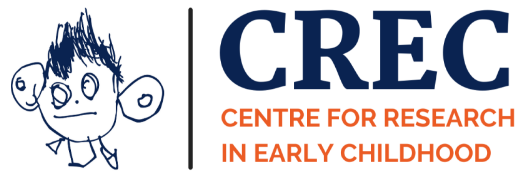Creativity and the arts in early childhood education
Debi Keyte-Hartland, joint lead tutor of our Creativity and the Arts in Early Childhood MA pathway, explores our understanding of creativity in the early years and how we, as practitioners, can effect change in ways that will nurture the creativity of young children.
Reshaping Our Understanding of Creativity in Early Childhood Education
Global research and practice in creativity and the arts is a vast and expanding field of study within Early Childhood Education (ECE) that recognises young children as strong makers of meaning, capable of imaginative and creative activity.
This research is reshaping our understanding of creativity as an essential characteristic of learning for young children, at a time when it seems like current government policy undervalues creativity and the arts , making it less present in current English curriculum and practice.
Vea Vecchi (2010) talks about how children learn in a multi-disciplinary and multi-sensorial way that is already inherent in children.
In her book, Art and Creativity in Reggio Emilia; Exploring the Role and Potential of Ateliers in Early Childhood Education, she speaks about how children learn with and through the arts and how they can be used as a way of challenging dominant discourses through providing contexts for multiple perspectives to be heard and shared.
It is for Vecchi, a way of working that is about ideas and thinking and of communicating these to others. Therefore creating contexts for creativity and the arts is an imperative if we want our children to be creating and thinking critically either independently or collaboratively with others.
We believe there is a vitality and life to children’s creativity. They do not stand still, instead, they move with rich and bold energy both with mind and body often making connections between other connections, their learning resembling a tangled bowl of spaghetti, as Loris Malaguzzi used to say, rather than, as a linear stage of progressive, identified steps.
Children are multi-modal and full of potential ideas and thinking and often use these different and combined modalities to communicate their ideas through artistic activity.
In this example (see image on the right) from Woodlands Nursery and Primary School in Telford and Wrekin, this drawing was made when a small group of children (who had gifted to a tree a musical offering), drew ‘the patterns of the tree’s music’ that they thought the tree was communicating back to them.
In this way, modalities of music and drawing interwove to create the drawing and to communicate the idea that music has a shape and pattern to it.
Finding ways to identify and document the characteristics of creativity can be difficult for artists and educators to articulate. This MA pathway aims to disrupt this perceived difficulty by exploring a deepened understanding of what creativity is, looks like, and how episodes of it can be documented within arts-based contexts.
The Creativity and the Arts in Early Childhood pathway will enable students to reflect upon their own role in arts encounters with young children, the materials used and the spaces developed, whilst also evolving their own practice with greater understanding, awareness and critical insight.
Most of all, this pathway will offer students the opportunity to reflect on their own practice to gain insight into theory and to identify and effect change in ways that will nurture the creativity of young children.
Both Peppy and I are looking forward to learning together with students to find out what children are capable of in environments that are supportive, generative and nurturing of children’s creativity!
More about Debi Keyte-Hartland
Debi Keyte-Hartland is a passionate advocate for early childhood education. She is an international, independent consultant working directly with teachers and senior leadership teams exploring approaches to education that create fertile conditions for creativity and enquiry, of both children and educators.
Her specialist experience and interests are in the use of the visual arts as a tool for creative and critical thinking, and in how these expressive visual languages can embrace values of active listening and co-construction of knowledge.
She is a Co-Director of Sightlines Initiative, the UK reference point of Reggio Children. Her blog can be found at debikeytehartland.me.
Debi was invited to speak at TEDxBrum in 2014 where she shared her passion and thoughts about what happens when we value and take seriously children’s own curiosity and enquiry and turn our schools into environments that generate, foster and make visible children’s enquiry.
More about Peppy Hills
Peppy is committed to exploring and advocating the role of creativity within meaningful learning experiences. She is particularly interested in how characteristics of creativity can be nurtured within formal educational settings.
Peppy has worked internationally for major dance and theatre companies and as a creative practitioner, trainer, evaluator and lecturer.
Her art form specialism is dance and movement, and her approach is primarily play-based, using choreographic devices in a spontaneous way to support movement experiences and interactions.
For more information about the Creativity and the Arts in Early Childhood MA pathway with CREC, including 2019/20 course dates, fees and entry requirements, please visit the MA pathway page, here.

